Imagine a home office that doubles as a guest bedroom or a craft room that seamlessly transforms into a cozy reading nook—these are the wonders of multi-purpose room designs. In our ever-evolving living spaces, the ability to adapt and redefine areas within your home is not just a luxury but a necessity. Whether you’re a beginner embarking on your first decorating adventure or a seasoned designer seeking fresh inspiration, mastering the art of multi-purpose rooms can unlock a world of possibilities.
The beauty of multi-purpose room designs lies in their ability to maximize both functionality and style, making every square foot count. As we delve into the intricacies of creating these versatile spaces, you’ll discover practical tips on choosing the right furniture, optimizing layout, and incorporating personal touches that reflect your unique style. From clever storage solutions to innovative design concepts, this article will equip you with the tools to transform any room into a multifunctional masterpiece.
You’ll learn how to blend aesthetics with practicality, ensuring that each room serves its purpose without compromising on comfort or beauty. By the end of this journey, you’ll not only have the confidence to tackle your own multi-purpose projects but also a newfound appreciation for the creativity that such designs inspire. So, let’s embark on this exciting exploration of multi-purpose room designs and unlock the full potential of your home, one room at a time.
Designing for Dual Functionality
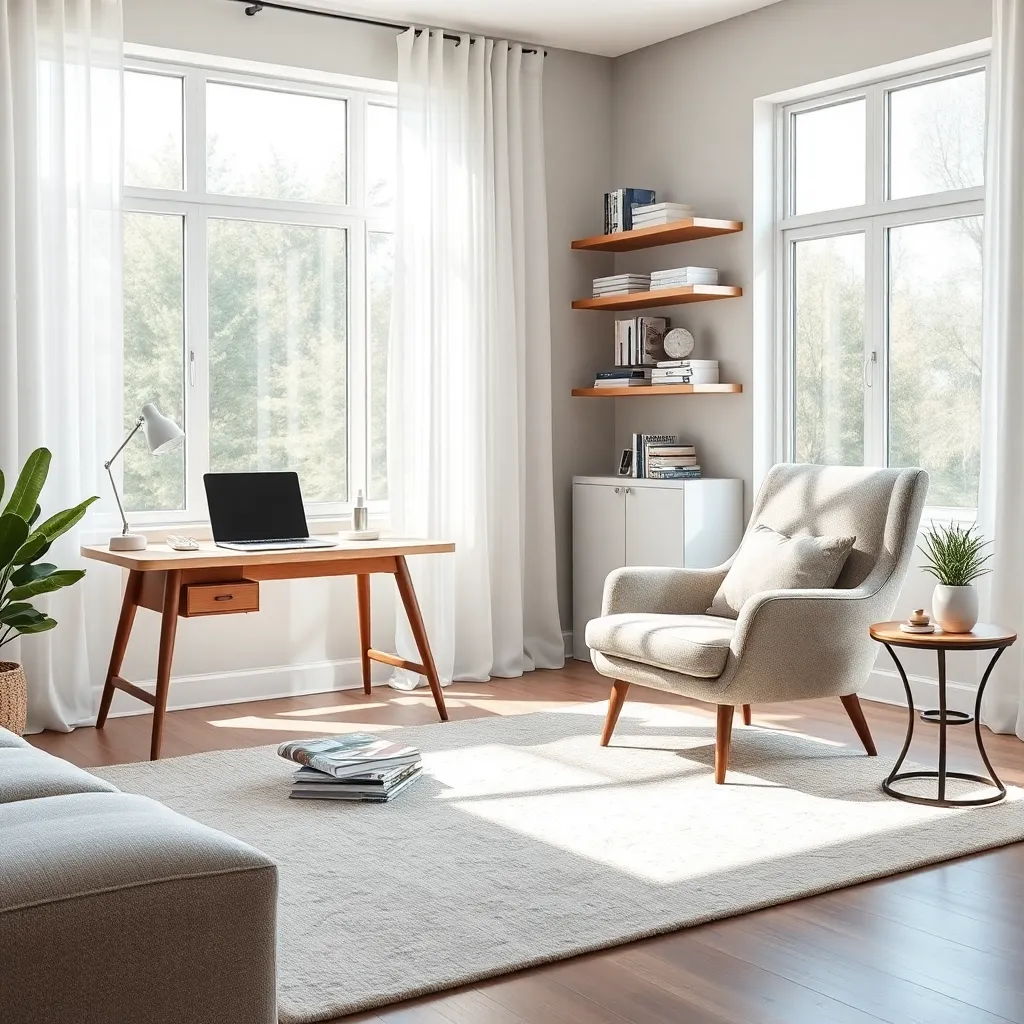
Incorporating dual functionality into a room requires a clever approach to space planning. Start by identifying the primary activities that will take place in the room, then choose furniture that can serve multiple purposes. For instance, a sleek sofa bed provides seating during the day and transforms into a guest bed at night. Opt for a design that complements your room’s color scheme, such as a neutral gray or navy, which blends seamlessly with most decors.
Another practical tip is to install fold-down desks or wall-mounted tables in small spaces. These additions offer a workspace solution that can be tucked away when not in use, giving you more room to move around. Consider materials like light wood or white finishes that reflect light and create an illusion of spaciousness. For those with more advanced DIY skills, creating a custom fold-down solution can add a unique touch to your space.
Storage is a key component in rooms designed for dual functionality. Incorporate vertical storage like shelving units or tall cabinets to maximize floor space. Ensure these units are sturdy and match the room’s aesthetic, such as metal accents for an industrial look or reclaimed wood for a rustic vibe. Use decorative baskets or boxes to keep items organized and easily accessible, adding both function and style to your room.
Finally, use color and texture to define distinct areas within the same room. A rug can delineate a living area from a workspace, while different wall colors or wallpaper can highlight specific functions. Choose complementary colors like soft blues and greens for a calming effect, or bold patterns for a more vibrant feel. Advanced decorators might experiment with layered lighting to adjust the ambiance based on the room’s current use, enhancing both comfort and functionality.
Maximizing Small Space Efficiency
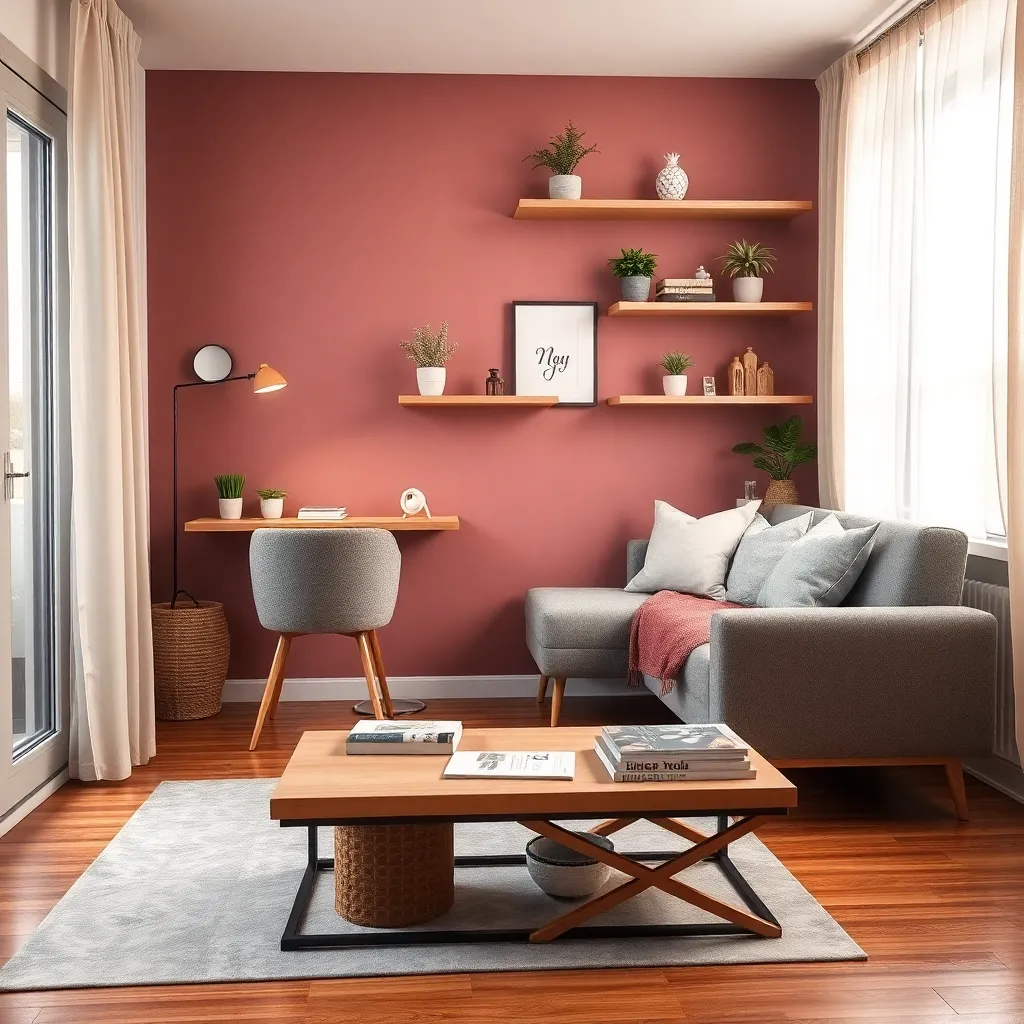
Creating a multi-purpose room in a small space begins with smart furniture selection. Opt for transformative pieces like a fold-out desk or a sofa bed, which can seamlessly transition between functions throughout the day.
Think vertically to maximize storage and functionality, using the height of your walls to your advantage. Install floating shelves or tall bookcases to keep the floor area clear, which helps maintain an open and airy atmosphere.
Color schemes play a crucial role in making a small space feel larger. Use light, neutral colors like soft whites, grays, or pastel shades to reflect light and create an illusion of expansiveness.
For those looking to add a touch of sophistication, consider incorporating mirrors strategically. Placing a large mirror opposite a window can enhance natural light and visually double your space, adding both function and style.
Incorporating Flexible Furniture Solutions
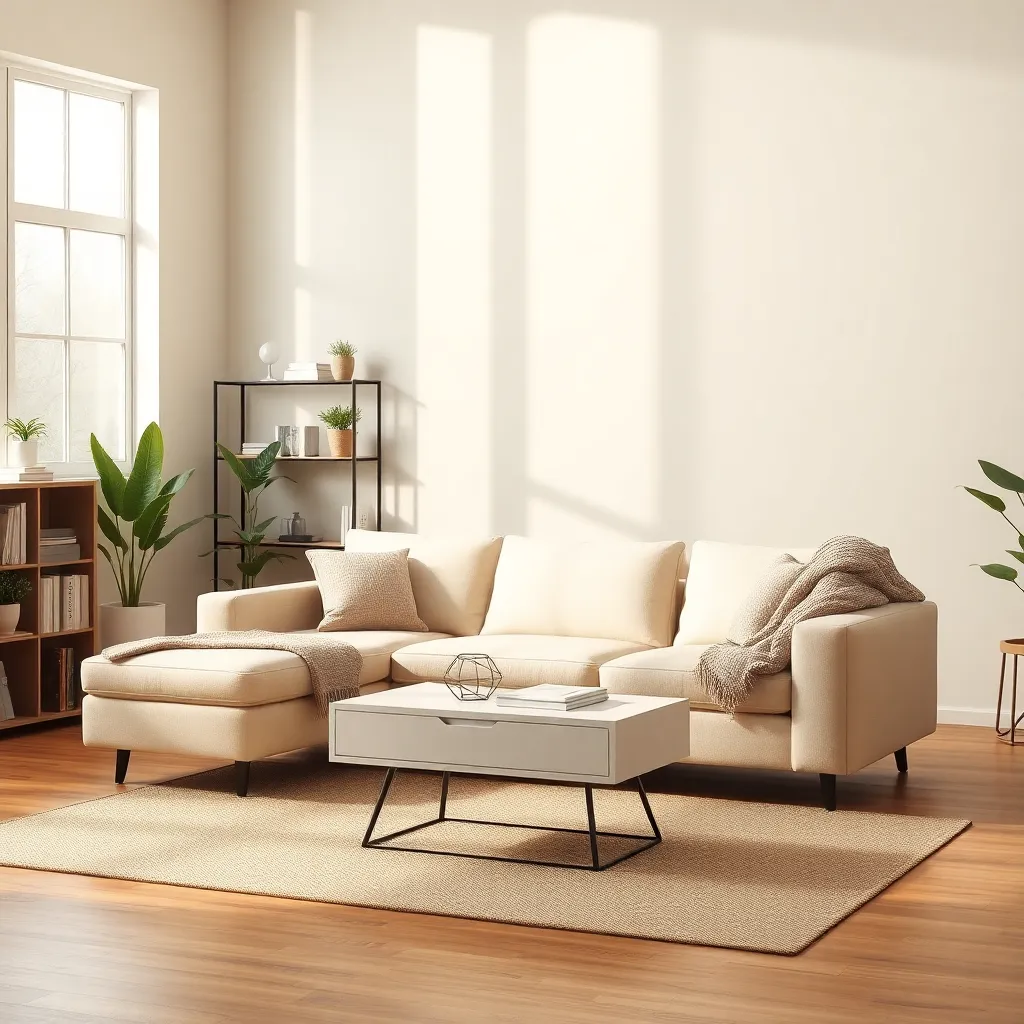
Incorporating flexible furniture solutions is a strategic way to enhance the functionality of a multi-purpose room. Consider using a sofa bed, which effortlessly transforms a living area into a guest bedroom when needed.
Look for furniture that serves dual purposes, such as a coffee table with storage capabilities. This not only provides a place for decor but also offers hidden storage for blankets or magazines, maintaining a clutter-free environment.
Think about investing in modular furniture that can be rearranged to suit different activities. For example, sectional sofas can be split and moved around to create separate seating areas or combined for a more communal space.
When selecting colors for flexible furniture, opt for neutral tones that easily blend with various design styles. Shades like soft gray or beige offer versatility and can be paired with bold accessories for a pop of color.
Blending Aesthetics with Practicality
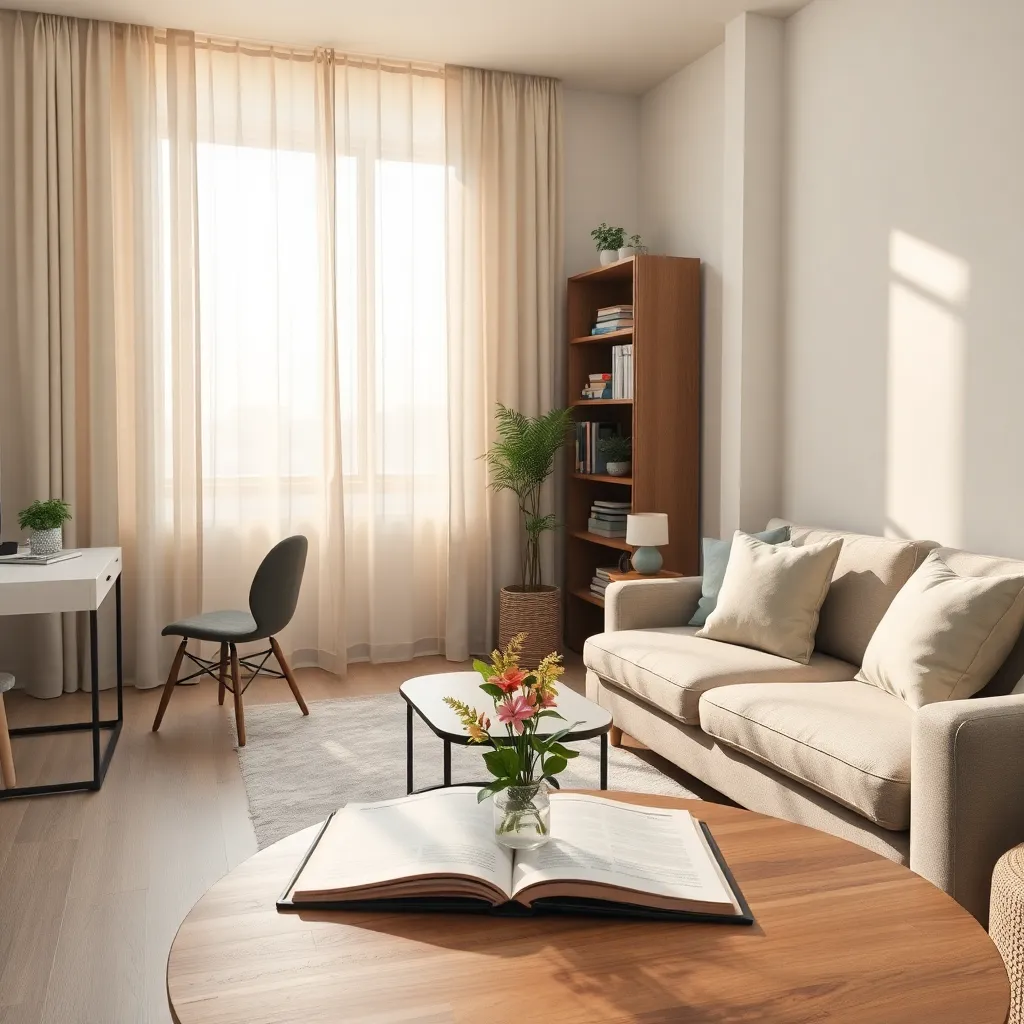
One of the key ways to blend aesthetics with practicality in a multi-purpose room is through thoughtful color selection. Opt for a neutral base palette, such as soft grays or warm beiges, which can be easily adapted with different accent colors as needed, ensuring versatility and cohesion.
Consider the balance between form and function by selecting furniture that serves dual purposes without sacrificing style. For instance, a sleek, modern sofa bed in a muted fabric can provide both seating and sleeping accommodations, maintaining a clean and uncluttered appearance.
Incorporating storage solutions that double as decorative elements can enhance both the functionality and visual appeal of a room. Choose stylish storage ottomans or built-in shelves with a mix of open and closed spaces to keep the area tidy while showcasing personal items or art pieces.
Lighting is another crucial factor in blending aesthetics with practicality, as it can transform the ambiance of a space while serving essential functions. Use a combination of ambient, task, and accent lighting to create a layered effect, ensuring the room can be easily adapted for various activities.
Optimizing Storage in Multi-use Areas
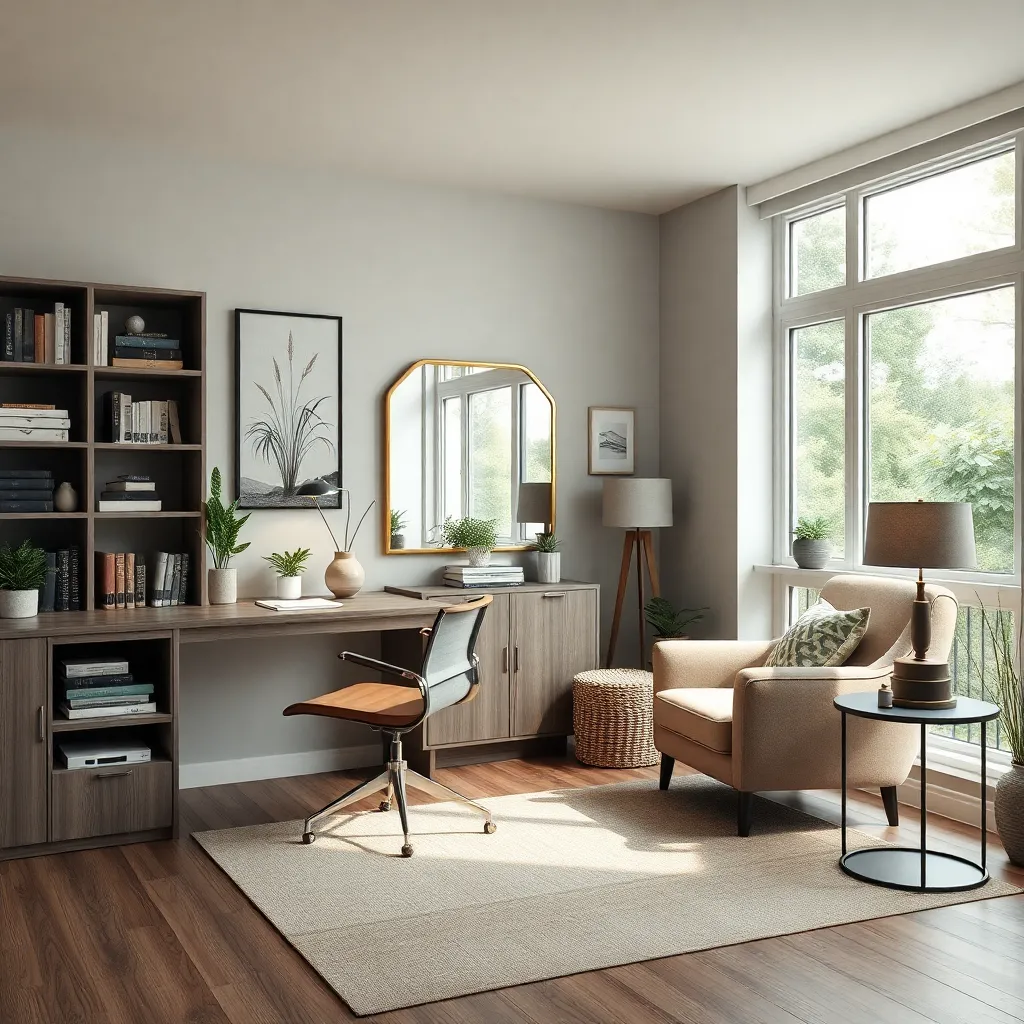
One of the most effective strategies for optimizing storage in multi-use areas is to incorporate furniture that doubles as storage. Ottomans with hidden compartments or benches with built-in shelves can seamlessly blend into any room, providing both style and functionality. For those who are just starting out, consider choosing furniture pieces in neutral colors like soft grays or whites, which can easily adapt to various design themes.
Another practical approach is to utilize vertical space, which is often underutilized in home design. Installing floating shelves or tall bookcases can maximize storage without taking up valuable floor space. Advanced decorators might experiment with color-blocking these shelves to add an element of design flair, using combinations like navy and mustard for a bold, modern look.
For rooms that serve multiple purposes, such as a guest bedroom and home office, it’s essential to choose versatile decor that can transition between functions. Opt for a murphy bed or a sofa bed to provide sleeping space without permanently occupying the room. Pair these with a foldable desk or a wall-mounted desk that can be stowed away to create an open area when not in use.
Finally, organizing items into categories can make a significant difference in maintaining a tidy, multi-use space. Use decorative baskets or storage bins that match the room’s color scheme to keep the aesthetic cohesive while ensuring everything has its place. Consider labeling these containers for easy access and to streamline the process of switching between room functions, which can be especially useful for families with varying storage needs.
Conclusion: Growing Success with These Plants
In exploring the art of creating multi-purpose room designs, we uncovered five key relationship concepts: the importance of adaptability in shared spaces, the value of communication in planning, the role of compromise in design decisions, the need for personal space within communal areas, and the power of creativity to reflect the unique dynamics of your relationship. By embracing these principles, couples can transform their living environments into nurturing havens that foster connection and growth.
As a practical next step, take a moment to sit down with your partner and brainstorm how you can apply these concepts to a room in your home. Whether it’s reimagining a corner for relaxation or creating a workspace that accommodates both your needs, this shared project can strengthen your bond and enhance your living experience.
Remember, transforming your space is a journey that mirrors the evolution of your relationship. To keep this guide at your fingertips, be sure to bookmark this article for ongoing inspiration and practical advice. By investing in thoughtful design and intentional living, you set the stage for a thriving relationship that grows more resilient with every change and challenge. Your journey to a harmonious home—and heart—begins today.
